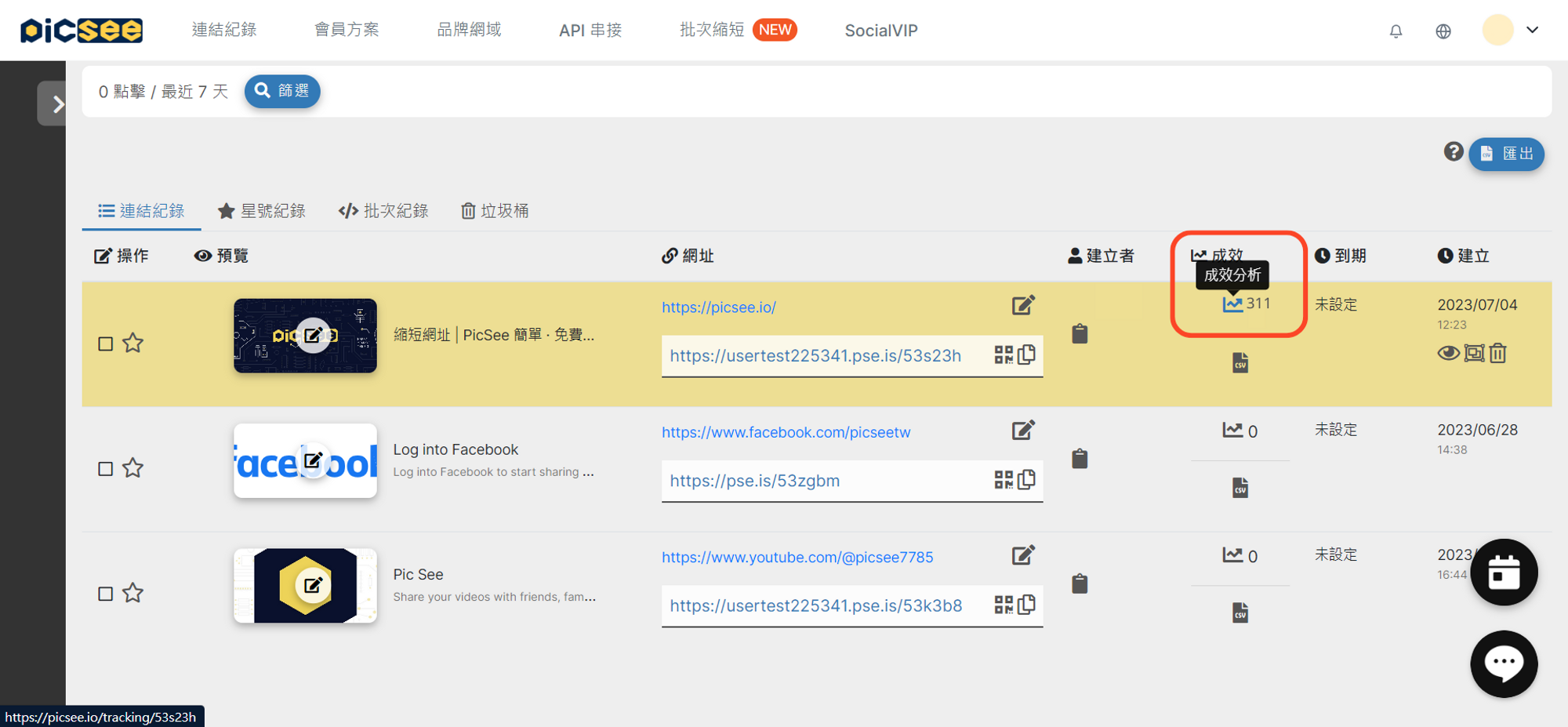How to Access the Analytics Page of a Specific Short Link?
There are two methods:- Append a plus sign to the short link: For example, if the short link is https://pse.is/4nfth2, entering https://pse.is/4nfth2+ in the browser will open the analytics page.
- Access via the link records page: Click on the analytics icon next to the performance metrics in the link records list to open the analytics page.

Performance Analytics Overview
The following image is an example of the analytics page. From top to bottom and left to right, it includes: basic link details, total clicks, unique clicks, daily/hourly click trends, device distribution, referrers, and geographic locations.Key analytics features include:
Data Export
Users can download daily click data for up to one year from the top-right corner (availability depends on the Pricing Plan). The API also allows retrieving the last 60 days of daily click data.Hourly Click Breakdown
Daily click data can be displayed for up to one year, with an option to expand into hourly breakdowns (data retention varies by Pricing Plan).Referrer Breakdown
Major social platforms are categorized separately, including browsers within mobile apps such as LINE and Threads.City-Level Accuracy
Click location data is available down to the city level.Frequently Asked Questions:
- How is the data collected?
When a user clicks a short link, PicSee filters out bots and records the click in its database. Each recorded click represents a real redirect. Differences may occur compared to other platforms like Google Analytics, which only counts visits after a certain time threshold. - How are unique clicks calculated?
PicSee assigns a browser cookie upon clicking. If the same user clicks again with the same browser, it is not counted as unique. However, using different browsers, incognito mode, different devices, or clearing cookies may result in multiple counts. - What does "Direct" mean in referrer data?
Referrers are determined by the browser's "previous page" data (not UTM parameters). If no referrer is detected, it is labeled as "Direct." Common cases include manually entering the short link, scanning a QR code, clicking a link in the LINE desktop app, or opening a link in a mobile app's built-in browser. - How is geographic location determined?
PicSee uses an IP-based geolocation service to estimate user locations. However, due to the vast number of IPs, accuracy may vary. VPN usage can also affect results. Unrecognized data is displayed in a separate category for transparency. - Is the click data real-time?
PicSee uses asynchronous data processing, adjusting write speeds based on traffic levels. Generally, updates occur within 5 minutes. - Note: If you need to observe the analysis of short URLs, please confirm that the URL you posted is a short URL generated by PicSee.